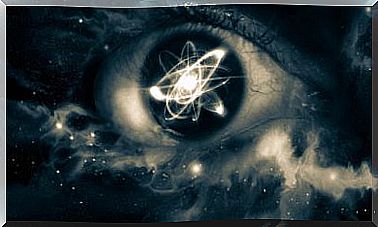When Anguish Invades Us: Emotional Uncertainty

Anguish is a paralyzing emotional state. In it, anxiety, formless fear, the feeling of danger, existential emptiness and the weight of an indefinable something that does not allow us to breathe are mixed. This psychological state is very common today and, although it is often associated with panic disorders, it also has other triggers that are worth knowing.
Some of us may have ever said that “I am distressed”. This word is very familiar to us and it is not difficult for others to get under our own skin when we say it out loud. However, from a clinical point of view this psychological experience is quite complex and even diffuse.
What exact origin does the anguish have? Are we talking only about anxiety or is there something else? From the field of psychology there is always confusion and lack of consensus when defining it. However, philosophers, on the other hand, have always been very clear about what is behind this term. The word anguish has its roots in German, ” angst” and defines something narrow, narrow, something that produces discomfort and trouble.
For Søren Kierkegaard, for example, this emotion is the assumption that people are finite, we would therefore be facing something that causes us vertigo as well as fear when thinking about the (limited) future possibilities that lie ahead. In turn, Jean-Paul Sartre, explained to us that the feeling of anguish is born when one is aware that everything that happens to us is due to one’s own decisions. We are truly responsible for our happiness or unhappiness.

What exactly is distress and how is it characterized?
Anguish and anxiety share the same “guest”: fear. Now, in the case of anguish there is a series of basic brushstrokes that shape that canvas of suffering so common in human beings at certain moments of their life.
- Anguish is fear of something indefinable.
- The anguished mind anticipates irrational things, only thinks of future dangers.
- The present is a void where the person feels sunk and paralyzed. His gaze is located only in the future, in that morning that bothers and scares him.
- Also, this psychological experience is accompanied by physical symptoms. There is a sensation of suffocation, chest pain, palpitations …
As we can see with the naked eye, it is quite difficult to differentiate anguish from simple anxiety. In fact, most of the time, panic disorders themselves present as their main symptom the feeling of anguish. For this reason, it is common that sometimes they go hand in hand and that the anguished mind itself acts as a trigger for a panic attack. They are very complex clinical realities that are usually delimited when each patient is assessed individually.

Why do we experience anguish?
The philosophers explained to us that anguish occurs in human beings when we become aware of our existence as such. That we are not eternal, that our decisions mark us, that time passes … That uncertainty is very present today. And it is because of a very simple fact. If there is something that characterizes modern society, it is not knowing what will happen tomorrow. Work, the economy, relationships … Everything can change from one day to the next and all this, anguish.
So, something to clarify first is that experiencing distress is completely normal. There is nothing pathological about it. Not if that anxiety is adaptive. That is, if what we achieve with it is to reflect on our situation and then make a decision for the future. It is what Sigmund Freud defined as “realistic anguish”.

Now, on the opposite side we would have maladaptive anxiety. It is the one that we have described previously and that would have the following origins:
- Personal crises not managed properly. They are states that become chronic over time and that can be combined with other disorders, such as depression.
- Feeling of blockage when we feel unable to handle certain situations. Factors such as unemployment, a separation, a change that is about to come can determine its appearance.
- Problems in our social relationships, disagreements, disappointments …
- Likewise, it is also important to talk about the genetic factor. Many times the anguish settles in us for no apparent reason. It is known, for example, that there are people with a greater predisposition to experience increases in adrenaline or to suffer decreases in gamma-aminobutyric acid (GABA). All these neurochemical alterations would lead to the appearance of anxiety.
To conclude, just note that on average, panic attacks are adequately managed through therapy. Cognitive-behavioral therapy, acceptance and commitment therapy, as well as approaches such as mindfulness are the strategies that provide us with the best results. In the most severe cases, pharmacological approaches will also be chosen.








